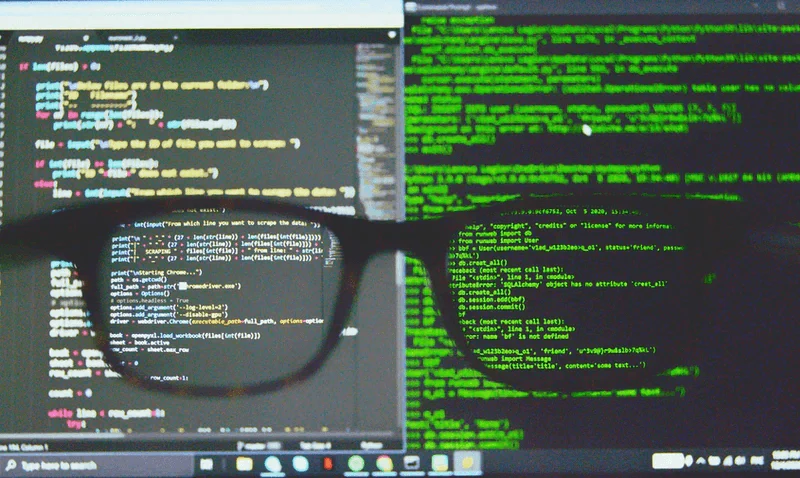A Glimpse Into The Future of Python Engineering
Python has grown in both popularity and use year on year for the last decade. Today, it exists as one of the most powerful general-purpose languages available. A tool occasionally overlooked by some, it’s one that deserves more than a second glance for a wide range of projects and tasks.
Appreciated by both students of engineering and professional development teams—the simplicity of the language and ease of access it provides to higher libraries and platforms are invaluable assets for high-quality production. We’ve already talked about the Pros and Cons of Python Development, but today let’s take a look towards future trends for Python.
Looking for a Python developer? Just tell us what you need! We can do the work for you and connect you with up to 5 companies within 72h that match your needs—all for free.
Python 3
With one eye on the future, Python has recently undergone a revolutionary change and drastic shift.
Previous versions of the language, ending with Python 2.x, came to their final phase of support in January 2020. The latest version, Python 3, continues in development but breaks support for code written using previous versions.

Python 3 is designed to be intentionally backwards incompatible. This ambitious design choice aims to free designers and engineers to make improvements to the language that developers will feel long into the future. As a result, Python 3 is inherently more efficient, more concise, and more consistent than previous releases.
What developers have referred to as “language warts” are features implemented early in the history of the language that have grown to cause severe issues today. Cleaning these up has caused some short term issues for developers. Many useful tools and packages are being affected, broken, or rendered obsolete by the change.
The rewards, for refreshing the language and making difficult but forward-looking changes, will create overall improvements developers will benefit from well into the future.
Libraries
The brightest spots in the future of Python engineering lies firmly in the libraries, frameworks, and platforms supporting the language. At the heart of these libraries is the intent to provide developers with access to machine learning capabilities, data analysis, visualisation tools, natural language processing, and web frameworks for building modern applications.
Python has already established a rich history of support for tools and services that create innovative applications.
TensorFlow, for example, is Google's leading open source machine learning library. Designed around developing and training machine learning models in Python, it enables engineers to create systems that would be exceptionally difficult, if not impossible, using conventional tools.
Today, libraries available to Python developers allow engineers to implement complex behaviours and systems at a comparatively high level. Without requiring a doctorate or research background in each and every technology—developers can implement machine learning models, complex data analysis, and language processing capabilities, for example.
Some of Python’s most popular libraries and toolkits include:
- NumPy. The single most used Python library for working with complex mathematical functions.
- PyTorch. A library for machine learning models. One of the fastest-growing projects on GitHub today.
- SciPy. A library for scientific and technical computing.
- NLTK. Natural Language Toolkit, a collection of libraries for working with the English language.
- Django. Python’s most popular web application framework.
Each of these libraries are included amongst the 200,000 or so maintained by Python’s in-build package manager, pip. Enabling rapid deployment, maintenance, and upgrade of the many software packages available—pip is an invaluable tool to Python developers and another reason the language remains highly relevant decades after its first release.
Python in Production
Python has grown in popularity year-on-year because it’s easy to learn, intuitive to understand, and ideally suited to newcomers. None of these features, however, prohibit the language from being an essential tool at an enterprise scale. The truth is just the opposite. Python plays a critical role in some of the world’s biggest technology firms.
In the earliest days of Google, for example, the company's entire tech stack was written in Python. While technology, complexity, and engineering have grown to unparalleled scale within the company since, Python is still used extensively in many of the processes and teams Google retains in-house. Of course, there are plenty of out-of-house Python teams as well, which we describe in our article Should You Hire Python Freelancers or an Outsourced Python Team.
Similarly, streaming giant Netflix has made Python a core part of its tech stack from the earliest days of the platform. As one of the world’s most widely-used streaming services, Netflix tech teams combine well-known Python libraries with in-house packages to achieve the reliability and response at scale that they’ve come to be known for.

From the platform’s recommendation algorithms to traffic distribution, regional failover, and systems monitoring—there are few systems that the streaming platform doesn’t rely on Python to implement and monitor.
There are few major tech firms that don’t incorporate a reasonable amount of Python code within their tech stack. Facebook, NASA, Disney, and IBM all include Python focused workflows amongst their most critical operational components.
Advantages of the language, in its productivity, wide-ranging libraries, and portability make it an invaluable tool that few can pass up. And if you need help finding a development team, just tell us what you need and we can connect you with up to 5 companies within 72h that match your needs—all for free!
Recent shifts in the language, towards Python 3 and beyond, are only likely to increase this reliance over the next few years. Improvements in consistency, reliability, and performance coming with new releases of the language will allow teams to rely on Python for an even broader range of services and support.
Python Future
The future of Python then looks secure and assured for a long time to come. Vast community support and extensive development efforts are being aided and supported by the extensive corporate backing being lent to the language by tech giants and software firms.
These technical facets, combined with the simplicity, ease of use, and popularity of the language make backing Python development for your technical projects an easy and intelligent choice to make for your future. And should you need more guidance on how to hire a Python developer, our Comprehensive Guide to Hiring Python Engineering Teams is your one-stop shop for taking the next step!
